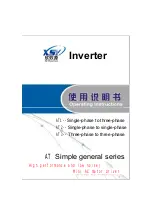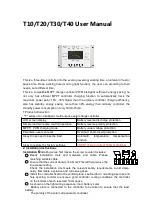
Troubleshooting and diagnosis options
TR-Electronic GmbH 2005, All Rights Reserved
Printed in the Federal Republic of Germany
Page 128 of 135
TR - ECE - BA - DGB - 0045 - 03
01/16/2015
8.2 Use of the PROFIBUS diagnosis
In a PROFIBUS system, the PROFIBUS masters provides the so-called host system,
e.g. a PLC-CPU, with process data. If there is no slave on the bus or it is no longer
accessible, or the slave reports a fault itself, the master must notify the host system of
the fault in one form or another. There are several possibilities here, whose evaluation
is solely decided by the application in the host system.
Generally a host system is not stopped by the failure of just one component on the
bus, but must react to the failure in an appropriate way in accordance with the safety
regulations. Normally the master firstly provides the host system with a summary
diagnosis, which the host system reads cyclically from the master, and through which
the user is informed of the state of the individual clients on the bus. If a client is
reported defective in the summary diagnosis, the host can request further data from
the master (slave diagnosis), which then allows a detailed evaluation of the reasons
for the fault. The reports obtained in this way can be generated from the master if the
affected slave fails to respond to the master's polling or they may come directly from
the slave if it reports a fault itself. The generation or reading of a diagnosis report
between the master and slave takes place automatically and does not need to be
programmed by the user.
Besides the standard diagnosis information, depending on the nominal configuration,
the measuring system can also provide an extended diagnosis report according to
CLASS 1 or CLASS 2 of the profile for encoders from the PROFIBUS User
Organization.
8.2.1 Standard diagnosis
The DP standard diagnosis is structured as follows. The perspective is always as
viewed from the master to the slave.
Byte no.
Significance
Standa
rd di
a
gnosis
byte 1
station status 1
byte 2
station status 2
byte 3
station status 3
general part
byte 4
master address
byte 5
manufacturer's identifier HI byte
byte 6
manufacturer's identifier LO byte
Extend
ed di
agnosis
byte 7
length (in bytes) of the extended
diagnosis including this byte
byte 8
to
byte 241
(max)
further device-specific diagnosis
device-specific
extensions








































